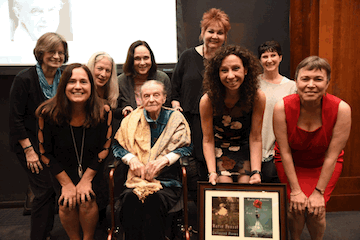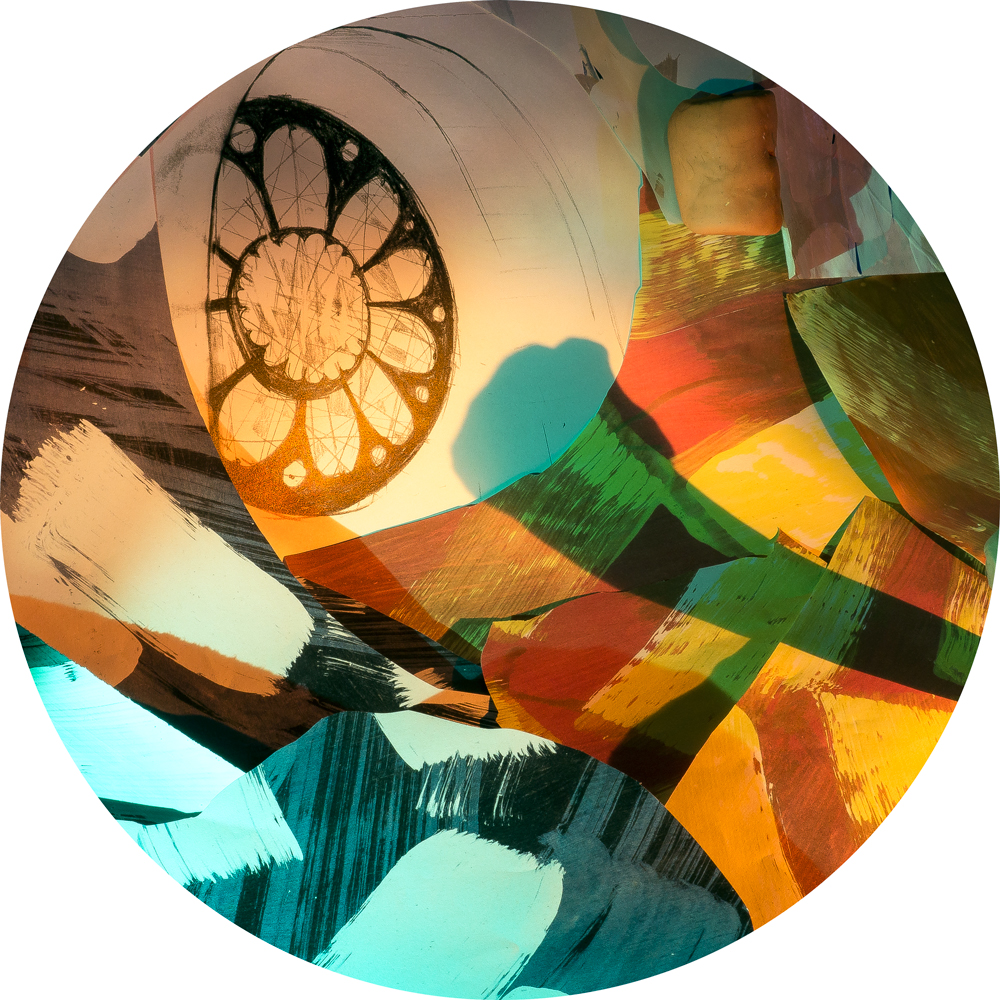Samantha Pious
Shakespeare to His Cat
When looking in the glass, if thou beholdest
Time's sandgrains sprinkling thy velvet coat,
if silver hairs replace thy former goldest,
be not afeared thy love might cease to dote.
Thy love, in spite of Time's crack'd sandy glass,
recalls thy fur was sleek and free from scurf,
and from his song thy youth shall never pass
to lie interr'd below the cold, cold turf.
Not though thy moustache be returned to dust
shall men declare thy glory dead and gone!
What though those mittens mildew?! Yet they must
—in this eternal melody—live on.
So stray at large, in every London house,
and seize the day as though it were a mouse!
My Cat Imagines Hell
If there's a place without any petting,
I don't want to know a thing about it.
Now and forever there is always petting.
There could never be a place without it.
Now, while you type, I'm stretching off the petting
that woke me from a very cozy nap.
Soon I will nudge your hands, demand more petting,
and knock that noisy keyboard off your lap.
Even in the barn, before you, there was petting.
My mother and the others, snug and warm,
and all together—better still than petting!
But I'm forgetting where it is they've gone.
If there was (but there isn't!) a place without petting
it wouldn't be like anywhere I've known
but cold and dark, the opposite of petting,
with neither hands nor voices: only me alone.
A banished cat, perhaps, would get no petting,
if she'd been very bad and lost her home.
But I'm so good I do deserve my petting!
And I'm so nice you'll never let me go.
Some cats there are who sin against their petting,
some wretched animals who scratch and bite.
Those who give no purrs in praise of petting
have merited the iron cage at night.
Even at the vet there is at least some petting!
Those gloves that hold you firmly, by the scruff,
and set you on the scale still count as petting.
—Of petting there is never quite enough.
I dreamt that I was on the scale. Your petting
was light and gentle, though your hands were wet
with rain. A little jab, and still your petting
surrounding me. You haven't left me yet.
|
|
 |
 |
|
|
 |
 |
The most recent addition to The Mezzo Cammin Women Poets Timeline is Rosa Newmarch by Jean L. Kreiling.
Marie Ponsot was presented with a Lifetime Achievement Award at the Celebration of the Timeline reaching 75 essays, Lincoln Center, Fordham University (Sponsored by Fordham's Curran Center) Friday, October 20th, 2017.
Charlotte Innes is the recipient of the 2018 Mezzo Cammin Scholarship to the Poetry by the Sea conference.
|
|
|
 |
|
|
|
 |
| Rachael Gorchov: Recently I completed a body of work that focused on the landscapes that define suburban office and industrial complexes, contemplating their subtle relationships with the history of landscape painting. When looking at these places I saw English landscape gardens – orchestrated nature that gave way to picturesque landscape painting. I documented my subjects onsite by drawing their reflections in a Claude Glass, a convex black mirror popularized as an observation device in the 18th century. This tool appealed to me for how its skews and bulges its reflection, making my work highly subjective from the start. I then constructed paintings in the studio based on these drawings. The three-dimensional nature of my paintings further emphasized the forced perspective in my initial drawings and required viewers to explore the paintings much like they might explore a physical space by moving around, crouching and craning their necks.
Irregular versions of geometric forms such as cubes, parabolic curves, cones and triangles comprised the dimensional shapes of these pieces and eventually gave way to my working nearly exclusively on concave surfaces and ‘rocks with cast shadows.’ I settled on these structures for a few reasons. When a viewer stands directly in front of the concave works, irregular half-spheres with the convex side attached to the wall, the paintings fill their peripheral vision for an immersive experience. The rocks and shadows, amorphous objects paired with adhesive-backed prints, are reminiscent of portals and geologic abrasions. They invite viewers to question if the dimensional form is emerging from or entering into another space. Like in other works, these pieces frame the physical space the artworks inhabit.
In 2016, I visited Europe where I recognized parallels between the interiors of Renaissance spaces and my own paintings, such as the power that foreshortening possesses in its ability to collapse and intensify space in cathedrals– similar to my Claude Glass works. This experience coincided with a visit to an exhibition in Vienna featuring renderings of synagogues that once stood in the city. This piqued an interest in contemplating architectural space in my work and prompted me to consider architectural language in my own Jewish cultural heritage. I then began a series of tondos, a Renaissance term for circular artworks, of European Jewish architecture.
Beginning with paintings and mixed-media, in these works I build a photographic image that engages the space wherever it is installed, becoming part of the architecture. I arrived at the tondo format through my own history of making non-rectangular paintings, and appreciate its relationship to reliefs and rose windows found in synagogues and cathedrals. In gathering source imagery, I rely heavily on documentation – photographs and engravings as most of these buildings have been destroyed. I contemplate the collective memory images of architectural space can reveal. In this spirit, this work depicts layered environments where scale, color and depth shift ambiguously, revealing experiential space.
I consistently begin works by looking at a particular subject because of an art historical or personal association, and then through a process of extracting details from their surroundings using an accumulation of marks, color and a tactility, I sacrifice specificity of form and place, ultimately revealing a specificity of experience as my subject.
|
|
|
|
|
|
 |
|
 |
|
|
|
|
